With the launch of a new eCommerce store on the horizon, a beauty brand faces the challenge of entering a competitive market. To become successful, they need to foster a seamless omnichannel presence that resonates with customers locally and globally.
To showcase the impact organic search can have and how to leverage that, we’ll detail an SEO plan we developed for a Canadian brand in the Beauty industry, describing the methodology and tactics to reach 60,000 customers within a year.
How scandiweb SEO can help
We cover two different SEO directions: local and eCommerce SEO.
For in-store traffic (local SEO), we leverage local SEO tactics to enhance visibility in physical store locations. This includes setting up and optimizing Google My Business profiles, ensuring the store appears in local listings and directories, and optimizing beauty service pages with local keywords. Additionally, the contact page will undergo optimization to make it easier for local customers to find and visit the store.
For online store traffic (eCommerce SEO), we create an SEO-friendly category tree and main menu to ensure product categories are easily navigable and search engine friendly. It’s optimized to capture low-hanging, long-tail keywords related to product categories. Product pages will receive a comprehensive optimization, focusing on core products and services, ensuring they rank high for relevant searches. The content strategy will target transactional keywords with informational SERP intent, providing valuable content that meets the user’s search intent while guiding them toward making a purchase.
Let’s break down our SEO strategy for a beauty brand step by step!
Our SEO strategy
Phase 1: Pre-launch
This stage is about establishing a solid foundation for SEO, content strategy, technical functionality, and user experience. Pre-launch activities include supporting website structure development and SEO of core content—categories, products, and services to ensure the website is SEO-friendly for users (on-page) and search engines (technical side). We’re setting the ground for further on-page and off-page optimization.
SEO work is tied closely to different aspects of marketing and website development. At this stage, you want to begin building a relationship with the potential audience—capturing leads, supporting subscribers, and engaging with them via email marketing. Correctly set priorities and scope of work will ensure the growth of organic traffic and revenue.
The two different SEO directions in the pre-launch phase focus on the following:
1) eCommerce SEO
- Creation of product-related pages to attract online shoppers to the client’s eCommerce store
- Targeting broader product-related keywords
- Targeting customers in all user journey stages with a focus on buying intent
- Main goal: revenue from online purchases.
2) Local SEO
- Targeting local searches to attract nearby customers to a physical business location
- Incorporating location-specific keywords and phrases
- Targeting users seeking local solutions or services, aiming to drive them to visit a physical store
- Main goal: online bookings and physical store visits.
SEO potential & insights
It’s important to set the right expectations when entering a market with established players and high keyword search volumes. In the Beauty industry, competition in Google is tough. However, despite several market dominators, SERP analysis revealed opportunities for newcomers.
When assessing competitors with similar product offers, it is evident that Sephora and Ulta are leading in the Canadian market in terms of SEO. Reviewed competitors have a strong online presence, domain authority, content depth, backlink profile, and brand recognition. They’ve likely invested years in building their SEO strategies, which can make it difficult for a new website to catch up quickly.
SEO takes time.
Gaining trust from search engines and users requires consistent effort and a history of quality content and interactions.
While the market is challenging, players with low authority and domain ratings have earned positions in the top 20 of Google’s SERP, which is a positive indicator. Despite the competition, there is room for growth and success through strategic SEO practices, consistent content creation, and smart optimization techniques.
Comparing main market competitors and established giants with smaller brands, we observed that domain age does not play a significant role. What matters are backlinks, brand authority, and domain rating, while content, page amount, and full semantic coverage are crucial.
Keyword opportunities
The beauty industry has an expansive keyword universe, and our strategy would be to target mid- and short-tail keywords (with higher keyword difficulty) in the mid- and long-term and aim for long-tail keywords in the short-term to drive organic sales as soon as possible. Let’s look at specific product and service keyword opportunities for eCommerce and local SEO.
Beauty product groups
Based on a SERP review of 7 keyword groups, e.g., hair products, makeup products, the steps are:
- Prioritize makeup keyword group as the best potential intent match and lower competition
- Focus on long-tail keywords with lower keyword difficulty and intent match
- Focus on specific product category optimization and creation
- Target product + near me keywords for local SEO.
Brand
Due to high competition with branded websites and current beauty giants, ranking for well-known brand-related search queries will be challenging. These are our suggested focus areas:
- Develop brand pages—long-tail keywords with lower keyword difficulty and optimized brand-specific landing pages are required to outcompete competitors
- Focus on the most searched product and page optimization.
Fragrance
Based on initial research, there is high competition for fragrances. Google SERP and intent target perfume stores and giants such as Sephora, Walmart, and Amazon. Possible opportunities and directions:
- Create a perfume brand landing page
- Optimize specific perfume PDP
- Create a fragrance/perfume finder page based on specific notes
- Use keywords like perfume stores near me to target local stores.
Wellness and general services
- Service pages have a high potential for local SEO as the goal is to bring customers to a physical location
- eCommerce SEO opportunities—focus on long-tail keyword optimization with lower keyword difficulty and intent match, optimize specific service pages, strengthen page value with internal linking to specific service-related procedures, prices & booking/appointment opportunities, and cover French keywords that are less competitive with a higher short-term ranking potential.
Specific treatments
- Local SEO opportunities are high—focus on ranking for near me keywords in the local area
- eCommerce SEO opportunities—focus on long-tail keyword optimization with lower keyword difficulty and intent match, create specific procedure pages, strengthen service page value with informational content to give customers as many details as possible about the procedure, and cover French keywords that are less competitive with a higher short-term ranking potential.
Website structure & content optimization
Through semantic mapping exercises and competitor and keyword research, it’s possible to define an SEO-friendly website structure, provide recommendations for page wireframes, and define content optimization guidelines on the individual page level.
Semantic mapping of core product groups and services helps to identify the essential attributes of the core product entities and their relationships with other relevant entities within the context that potential buyers might find interesting. Semantic mapping for service pages is similar. We need to ensure that customers can find services through every possible angle associated with them in the local area.
Benefits of semantic mapping
- SEO-friendly website navigation creation, logical category tree development, and recommendations regarding specific page creation
- A complete overview of the client’s service and product offering, making the optimization process more structured and efficient
- Workflow naturally extends to English and French as entities and attributes are language-agnostic, unlike keywords
- Creating semantically rich content that covers any possible angle users might be interested in to future-proof the website, which is especially important in the age of AI and large language models.
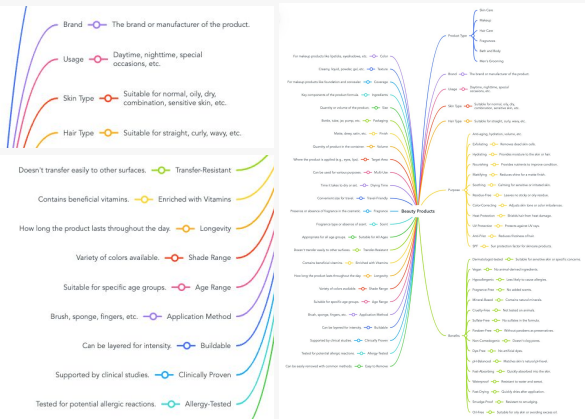
Depending on internal resources, the scandiweb SEO team supports the brand with content guidelines for copywriters in English and French, as well as text outline preparation, copywriting, proofreading, and translations.
Category page optimization includes optimizing meta titles and descriptions for categories and subcategories, expanding filtering options based on semantic mapping and keywords people use to find products that cover every angle and best meet the user intent, internal linking optimization and navigation suggestions, and SEO content guidelines and development.
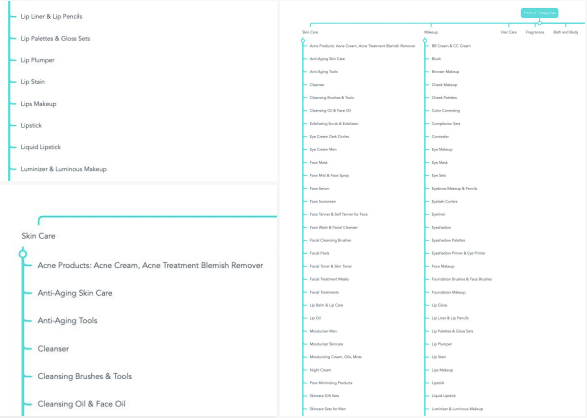
Competitor and keyword research
Content gap analysis is an essential initial workflow that we undertake before providing specific recommendations. It involves several key steps:
- Carefully identifying competitors—incorrect competitor selection can result in data that is not aligned with search intent
- Conducting keyword analysis to determine areas where content is lacking or insufficient
- Mapping discovered keywords with existing pages or recommending new page creation once the content gaps are identified.
Brand page optimization covers optimizing meta titles and descriptions for categories and subcategories, expanding filtering options based on semantic mapping and keywords, for example, through internal linking and buttons on brand category pages to achieve intent and keyword depth based on brand + product type searches.
Product and service description page optimization
- Optimization of meta titles and descriptions
- Create optimized product descriptions with relevant keywords
- Provide semantic recommendations on PDP must-have content blocks to cover and reach search intent
- Prepare guides on technical must-have elements implementation, such as alt tags, image formats, structured data, and FAQ.
Technical SEO
Technical SEO is the foundation of any successful website, and optimal setup ensures further optimization efforts are not hamstrung. With a solid technical foundation, the website can effectively communicate with search engines, set the stage for improved organic rankings, and provide users with a seamless browsing experience.
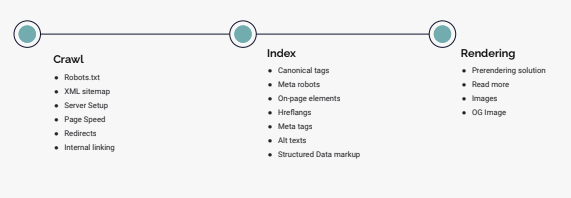
Well-defined technical SEO requirements, close cooperation with the development team from the start of the project, implementation of technical SEO best practices, and several waves of technical SEO audits before the website launch will allow development resources to be saved in later stages.
Lead capture
To develop a solid foundation for successful subscriber collection and brand introduction, the brand needs to combine effective SEO practices, UX, backlink, and PR efforts and optimize their pre-launch page. Collecting subscribers and building domain authority before the eCommerce store launch while offering early access involves two strategies.
1) Backlink building
- Outreach strategy to identify influencers, bloggers, and websites in the industry for potential backlinks
- Prepare guest articles for relevant websites with a link to the pre-launch page
- Collaborate with related businesses for mutually beneficial backlink opportunities
- Craft press releases announcing the pre-launch and unique value proposition.
2) Pre-launch optimization
- Optimize the main landing page with persuasive language and keywords that align with your SEO strategy
- SEO metadata, compelling headline, and value proposition
- Highlight the incentives—discounts, exclusive content—visitors will receive upon subscribing
- Display trust badges, testimonials, or endorsements to build credibility.
Phase 2: Launch
During the second stage, the focus shifts from preparation to execution and monitoring. This is where all the meticulously laid plans of the pre-launch phase are put to the test.
eCommerce store go-live support and monitoring
First, we have to guarantee that the website is fully accessible to search engine bots and that every element of the website is correctly rendered, crawled, and indexed. It’s crucial to cross-check all SEO configurations and settings on the live site. Launching a website can sometimes introduce unexpected bugs that affect SEO elements; therefore, immediate identification and fixes of these issues prevent any negative impact on the site’s search engine performance.
Local SEO
The launch phase also emphasizes configuring local SEO elements to improve the business’s online visibility for local searches and attract potential customers within the same geographical area. Actions include verifying and optimizing Google My Business listings, ensuring consistent local citations, and incorporating location-specific keywords into the site’s content. The goal is to make it as easy as possible for local customers to find and visit the physical store or to engage with the business online for local services and bookings.
Phase 3: Post-launch
After the website launch, we focus on ongoing content optimization and backlink building to target more mid- and short-tail keywords, new page type and content creation, KPIs monitoring of the KPIs, and continuous testing and iterations. The following were our suggestions for the Canadian beauty brand.
Transactional and informational content development
Considering the size of the brand’s product stock and variety of services, we suggest optimizing and experimenting with transactional content after launch. Moreover, there are various opportunities for targeting informational keywords:
- Mass, premium, and luxury cosmetics targeting by price range
- Guidelines to help users choose and purchase the product
- Quizzes and buying guides
- By quality
- By skin, hair type, etc.
- Product comparison pages
- Service comparison pages
- Tutorials
- Gifts.
Backlink building
Backlink building, already started in the pre-launch phase, is crucial for SEO. Incoming links drive direct referral traffic and enhance the website’s authority and visibility in search results, ultimately boosting its chances of ranking higher.
The number and quality of backlinks required for each target page are determined per page through thorough SERP analysis. After optimizing the content, we enable link-building activities. This allows us to allocate resources efficiently and quickly assess the results. The sources for acquiring backlinks are agreed upon individually with the client.
We focus on the following backlink-building strategies:
- Free directories and local business and services listings to showcase business details online, boost visibility, attract local customers, and improve search rankings
- Link buying through content marketing by creating valuable content and collaborating with relevant websites to acquire high-quality backlinks
- Press releases and influencer marketing to generate organic backlinks and increase brand visibility.
Additional insights
For the Canadian beauty brand, we identified a preliminary 10,000 low-hanging keywords relevant to their services, products, and premium customer segment. It is only 5% of Sephora’s total keywords, which means there is much bigger potential overall.
Ranking for these keywords can bring the following organic traffic to the website & Google Business Profile:
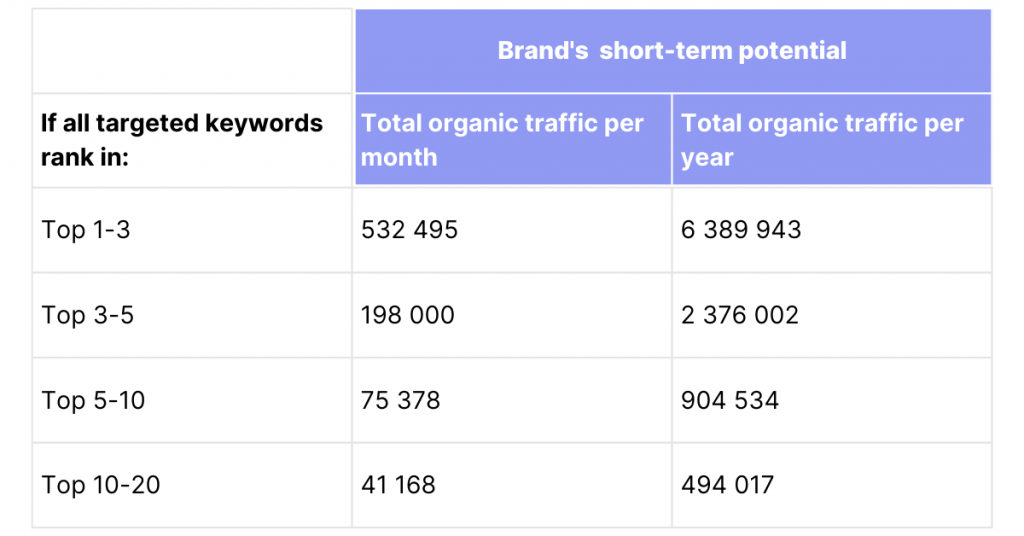
Our research shows that even if the brand gets into the 20th Google position for low-difficulty keywords by the end of the year, they will receive ~430,000 organic visits on the website, over-reaching the goal of online store visits by two times only from organic channels.
Another thing to remember is that the target customer shopping for beauty products will rely on an omnichannel presence to make buying decisions. In addition, social media is the new search engine for younger consumers. While Instagram, YouTube, Facebook, and TikTok will be the most cost-effective social media outlets for communication, beauty brands need to take them into consideration for search behavior as well. For Gen Z and millennials, social networks are the top channel for researching products, with 47% using them to weigh up their purchases.
Wrapping up
SEO is only one of the success factors when launching a fresh site in the Beauty industry. The goal is not just to bring more organic traffic but to generate more revenue in both online and offline channels. scandiweb’s cross-functional team can consult with and support brands on every aspect of lifecycle marketing and eCommerce.
Are you ready to make your beauty brand’s online presence known? With over 20 years in the industry and 600+ completed projects, our team is up for any challenge! Send us a message today and start with a free consultation.
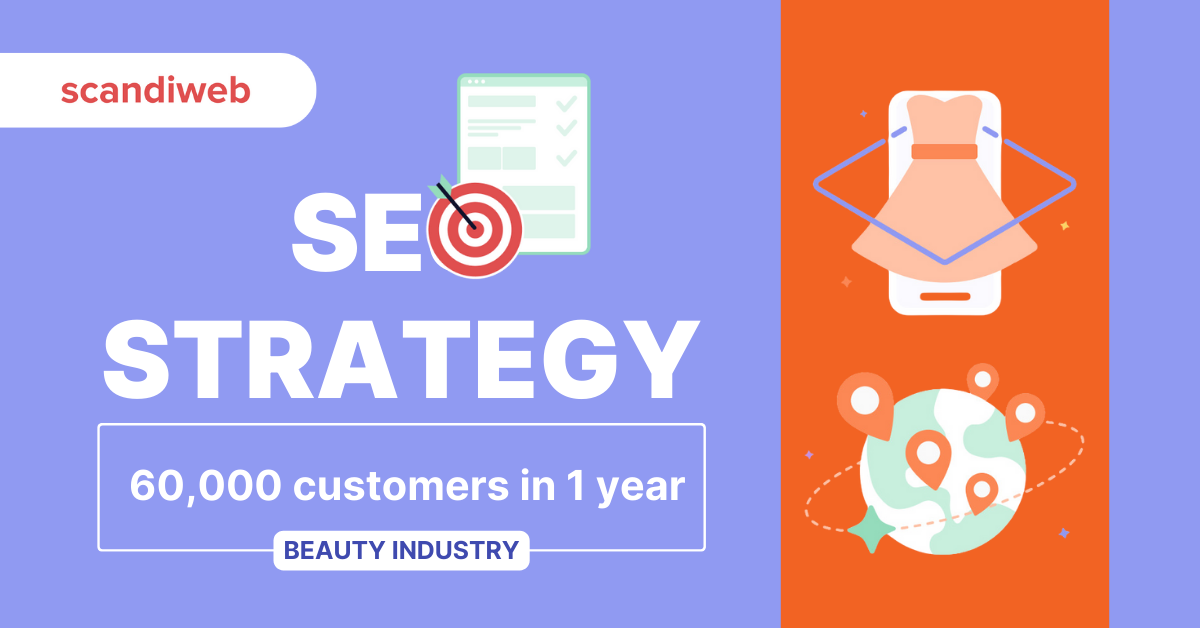
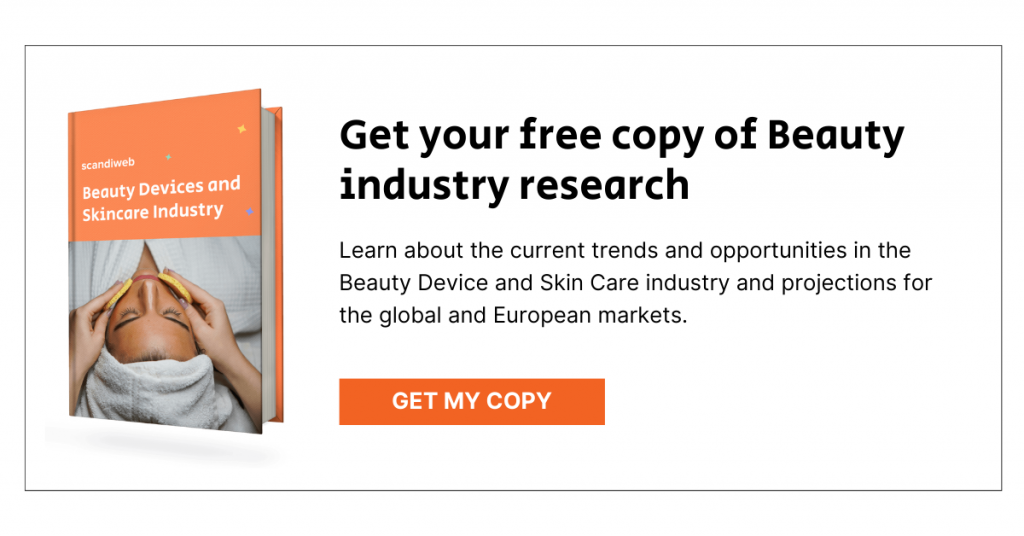
Share on: